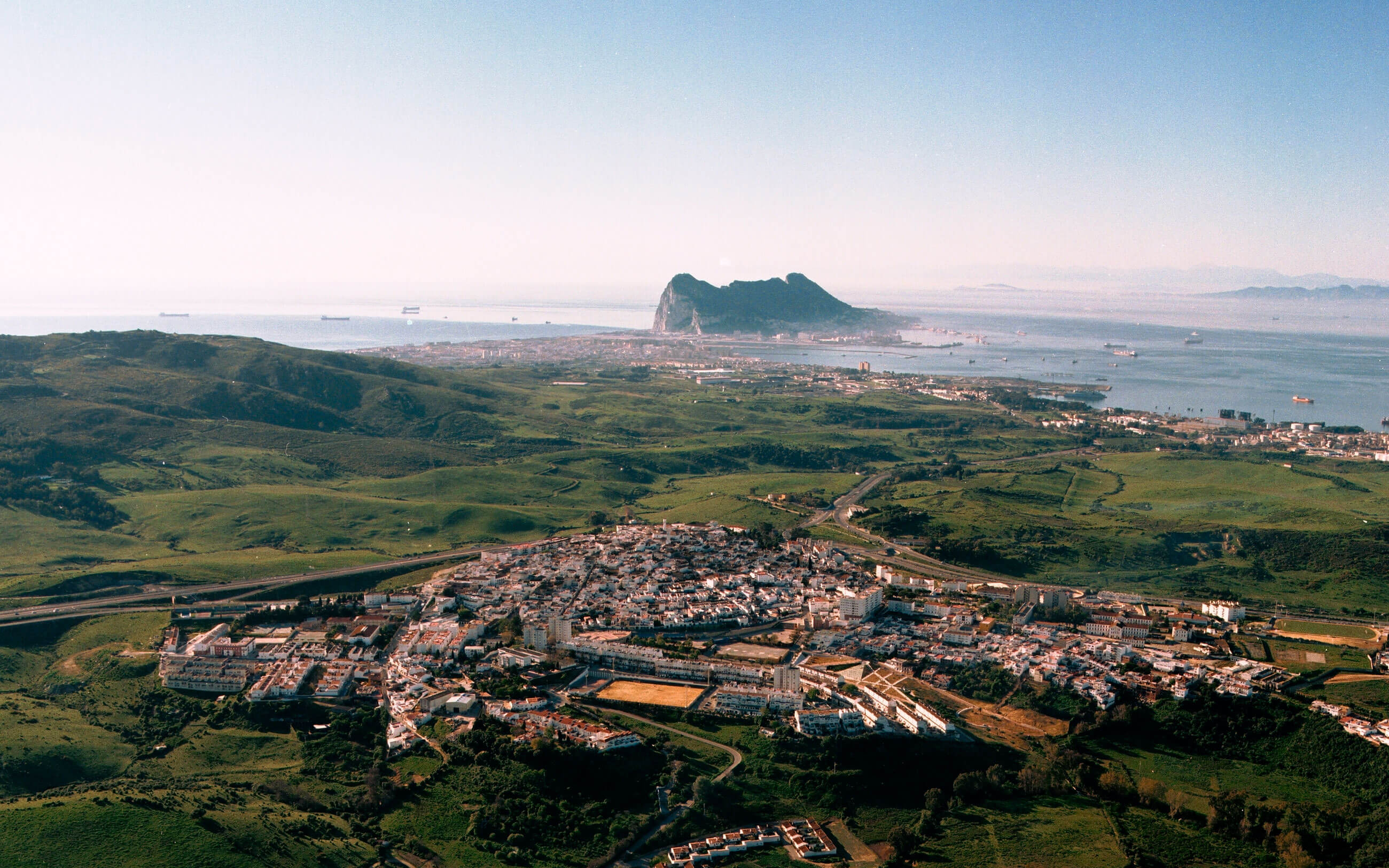Gira tu dispositivo para una experiencia óptima
Gira tu dispositivo para una experiencia óptima

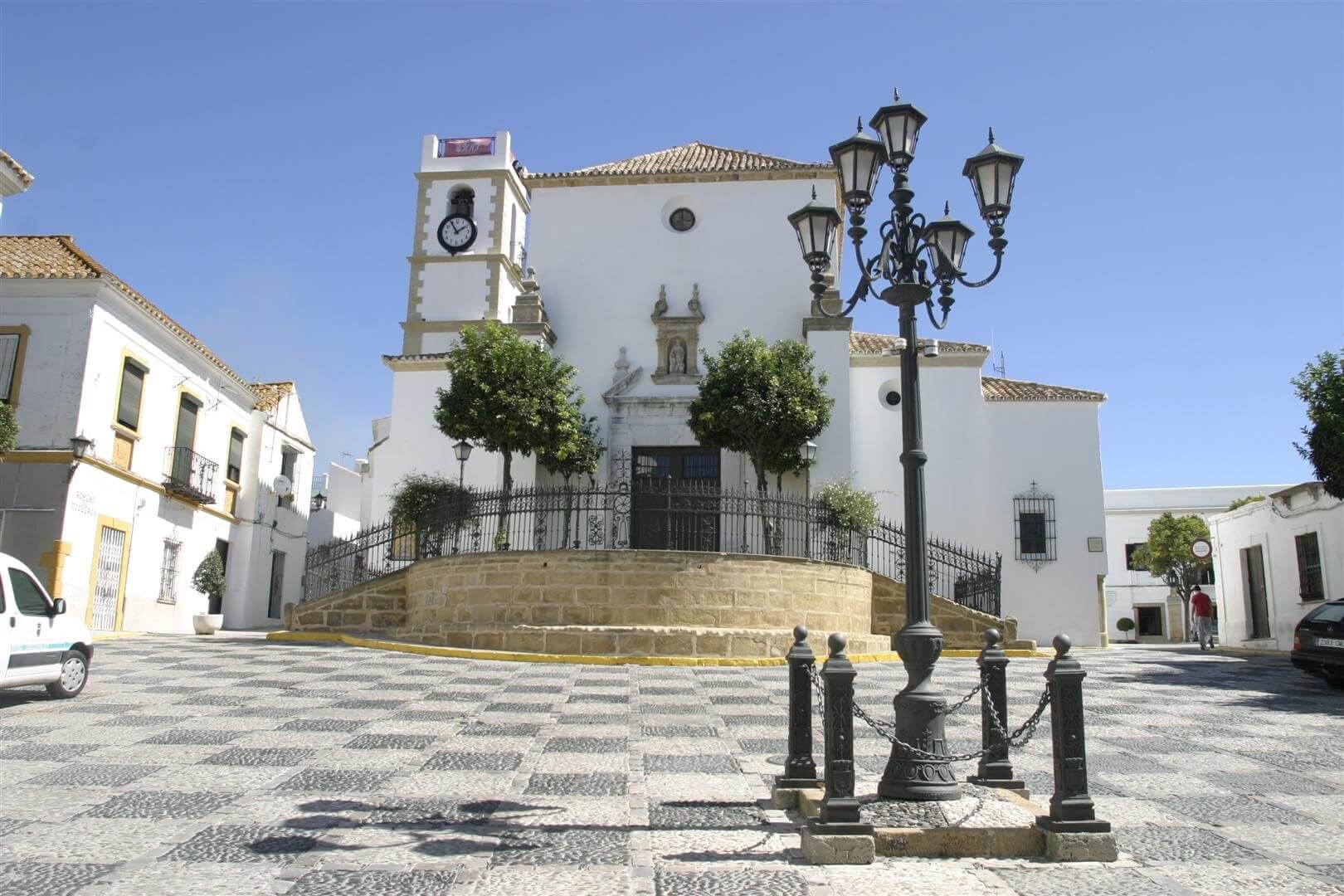
The city of San Roque is born out of an exodus: the exodus when the Spaniards left Gibraltar after the British occupation. They left with the minimum, but with their beliefs literally on their backs. That’s why San Roque today has many religious objects from the Rock of Gibraltar and much of the documentation of what was the source of its original history. At the tourist office, routes have been planned to get to know all this legacy.
The Exodus
It is easy to imagine the column of men and women dragging their belongings along with them: children, the elderly, all dispossessed of everything…5,000 people walking toward the Hermitage of San Roque, located a few kilometers away.
A sanctuary that they used to go to frequently. Sometimes they would go there to ask the patron saint to deliver them from the plague or yellow fever. Other times they would go there to spend the day in the countryside. They would make a special trip each August 15 to pay tribute to San Roque. A custom that was interrupted…like so many other things, in 1704. The Anglo-Dutch fleet had become the owner of the Rock of Gibraltar.
The chapel had been there since 1508 and this time they returned sad and dejected, because it was the hill from which one could best see Gibraltar. They believed that they would be there for a few days and then return as soon as possible.
The temporary settlement on the old Hermitage of San Roque thus became the seed of a new city, founded by the Spaniards who left Gibraltar, marked forever by the most sensitive event in the history of Spain.
The City Hall of San Roque was constituted by royal command on May 21, 1706, almost two years after the British invasion of Gibraltar.
On July 13, 1713, the dream of returning to Gibraltar faded. The Treaty of Utrecht had been signed. An act which confirmed the British ownership of the Rock of Gibraltar.
There were several attempts to recover it but hopes vanished after several attempts and skirmishes. Two cannons that were used in the siege are displayed at the Poet Domingo de Mena Scenic Lookout.
In 1735, the exiled people placed the first stone of the new parish of Santa Maria la Coronada where the old hermitage stood. A century later, the church topped the hill from which the best views of the lost land could be seen. A parish church that became the great repository of most of the goods that the emigrants were able to move to a new location.
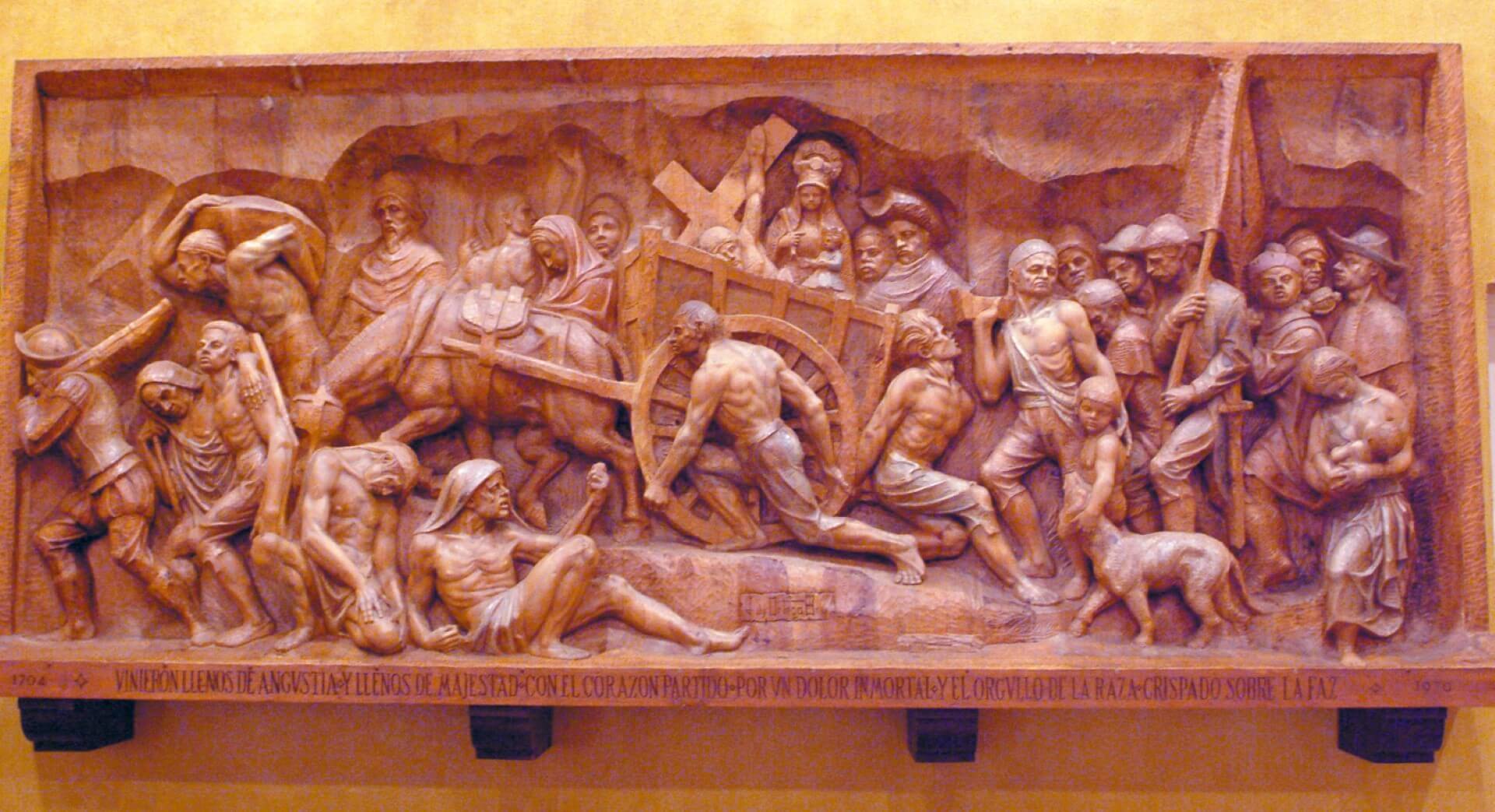
The heritage of Gibraltar was also evident during Holy Week in the city. The Autonomous Government of Andalusia has declared it a tourist attraction due to its great iconographic value, the beauty of the procession as it passes through the steep streets, and because on Good Friday the Magna Procession is held during which fourteen processional floats leave the Church of Santa Maria, six of them, says Carlos Jordan, are originally from Gibraltar.
Sebastian Araujo, author of "Santa Maria la Coronada Parish Church" tells the story of how the priest of Gibraltar, Juan Romero de Figueroa, summarizes what had happened in those years: He first speaks of a "fatal event," then "loss," and finally "exodus.” Then would come resignation. Romero Figueroa had become a hero who "with skill and patience managed to remove the archives, images, treasures and religious objects from Gibraltar."
The possessions of Gibraltar were reaching San Roque little by little. It is not known how the priest arranged it, but Araujo recounts incidents such as that of the Nazarene who was located on the Rock of Gibraltar. In 1722, the bishop of Cadiz, who also was the bishop of Gibraltar, authorized that the Genoese could take it out in procession on the way to Campamento, a circumstance that the San Roque devotees took advantage of and kept him. They carried him to the hermitage and did not let him to go back. Today it is in the chapel of the Visitation of Our Lady.
Antonio Pérez Girón, chronicler of the city, tells another anecdote in his "Brief History of San Roque": "The image of Saint Joseph left on horseback, as if he were a person, covered with a coat and hat."
The Exodus: people first
This departure of Gibraltarians marked the building of the town of San Roque and also their artists, as depicted in the inspirational high relief carving of the Exodus that can be seen in the Palace of the Governors.
Luis Ortega Bru, National Award for Sculpture recipient, turned his attention to this emotive wood carving to give people back their importance; for all the world to know that before the politics and international litigation, there was the pain of the people.
The pine sculpture is about three and one-half meters wide, one and one-half meters tall, 40 centimeters deep, and is displayed in the former headquarters of the Military Commander of the area, where many of the attacks to recover Gibraltar were planned.
In the Palace, there also is a replica of the Banner of Gibraltar (the original is in the Museum) as well as one of the most famous works of this prolific San Roque sculptor: the door of the Vatican Secretary of State in Rome.
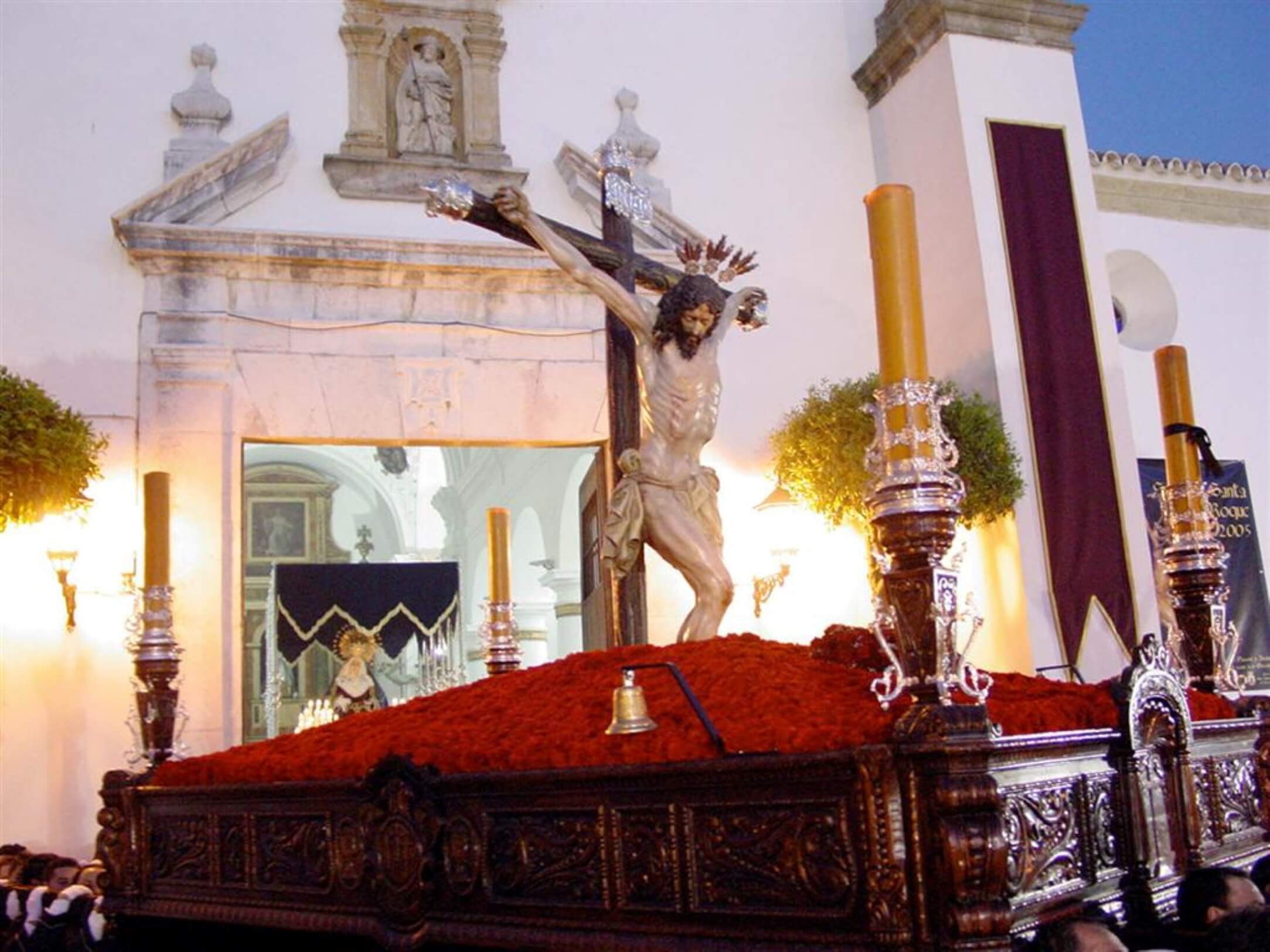
Here I cried for Gibraltar
In the old town hall, a neoclassical building of the 19th century, there is also a stained-glass window that recalls the loss of the Rock of Gibraltar in 1704.
The Varela stone is kept in the new town hall, on which you can read "Here I cried for Gibraltar," carved by one of the first emigrants, the councilor Bartolomé Luis Varela.
But if there is one place in San Roque that brings together the legacy that is the most popular, it is that which is housed in the main church.
Santa María La Coronada
This parish church contains numerous relics, among which are images from the 15th, 16th and 17th centuries brought from Gibraltar in the 18th century. The church also houses treasured parish books from Gibraltar dating from 1556 to 1704. It is, historically, the same church that was in Gibraltar.
In a niche in the church there is a Blessed Virgin from the 14th century from the shrine of Our Lady of the Remedies of Gibraltar and renamed in San Roque as Santa Maria la Coronada. The patron saint of the city brought a child next to her chest, but now she carries him in one of her arms because the original fell into the waters of the Bay.
At the main altar there is a sculpture of San Roque with his dog Melampo, the one that licked his wounds and brought him bread every day until the plague took him away, becoming forever the patron saint of epidemics and also of the city.
Next to him is the image of Saint Sebastian, a 16th century carving, also from the church of the same name in Gibraltar. Another champion against the plague.
In the church there is also the Christ of the True Cross whose brotherhood already existed in 1610 with a chapel on Calle Real in Gibraltar, today known as Main Street, the commercial artery of the colony.
In the Chapel of Souls, the Christ of the Sugar Cane - The Swarthy One- with a brotherhood that already existed in Gibraltar, where a brotherhood was also founded that venerated the Virgin of Solitude.
In the parish, which is also notable for its tower, illustrious dignitaries who died in the Siege of Gibraltar are buried, such as José Cadalso, considered the father of Romanticism in Spain, author of "Cartas Marruecas.”
The church was declared an Historic-Artistic Monument in 1974 and a Site of Cultural Interest in 1985.
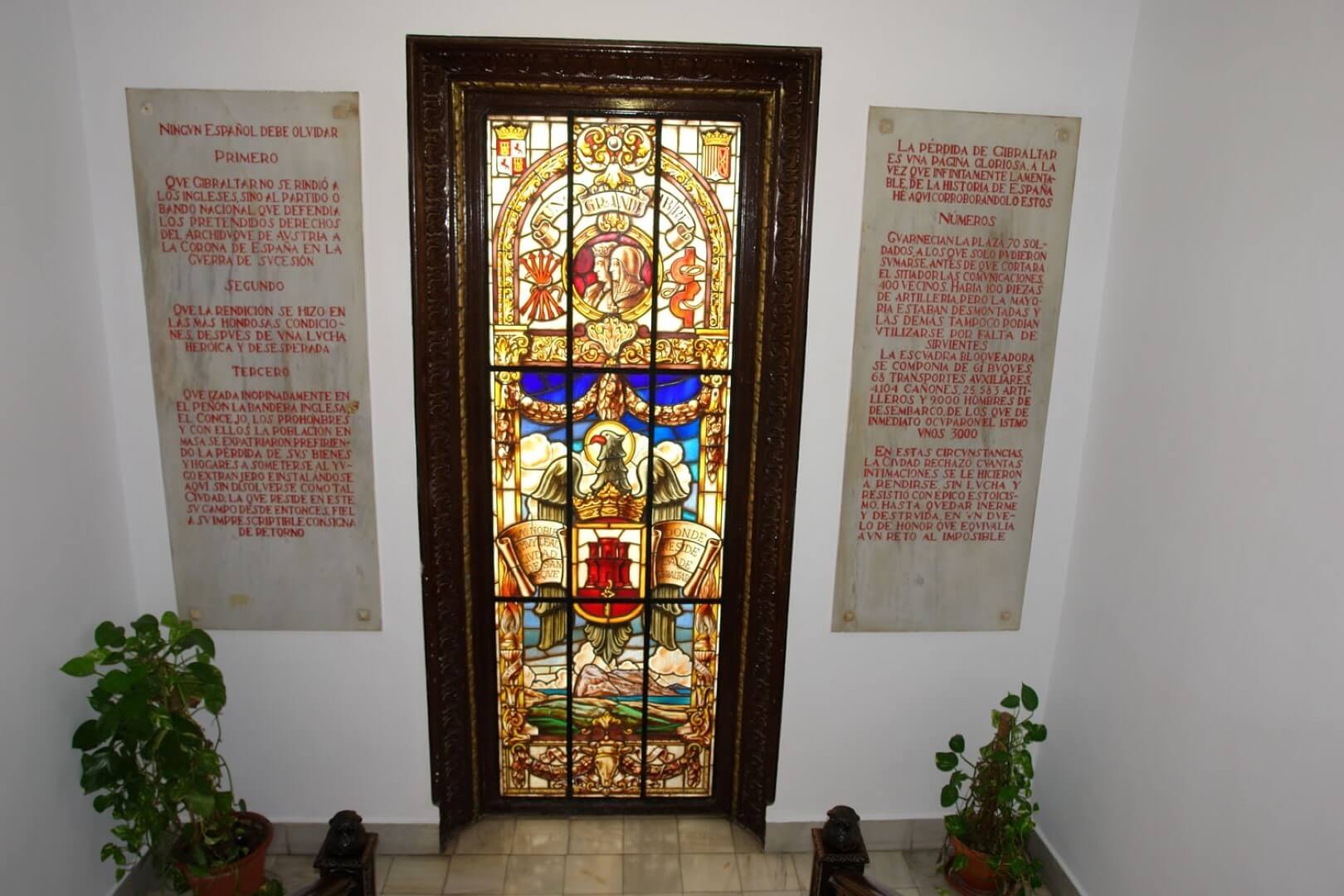
El Pinar del Rey
The inheritance of Gibraltar is more than cultural heritage. Only three kilometers from San Roque is the Pinar del Rey, a forest that dates back to 1800 when the Spanish Navy planted pine and cork trees in order to obtain wood to build ships of war.
The Catholic monarchs had granted these lands to Gibraltar in the 16th century, but in the 18th century San Roque became the legitimate heir. Today, as then, it remains a green lung, oblivious to the tribulations of history, through which the Alhaja Stream flows through a lush green field of more than 300 hectares.
Three centuries of occupation
Of special interest is the Historical Archive of San Roque because it houses all the documentation of the Campo de Gibraltar prior to the taking of the city: from the official papers of the Catholic Monarchs to the privileges, ordinances, tax exemptions, books and chapter proceedings.
In the book by Perez Girón, published on the occasion of the 300th anniversary of the occupation, the chronicler recalls that after the arrival of the British troops, the people - with their property confiscated- marched toward the San Roque chapels - the majority - Los Barrios, Algeciras, Castellar…a region known today as the Campo de Gibraltar…but it was San Roque who better united the legacy.
That is why Philip V converted San Roque "into the city where the city of Gibraltar lives" in 1706, a decision that has become the town’s motto. It is inscribed on a tile that welcomes all who come to the town.
